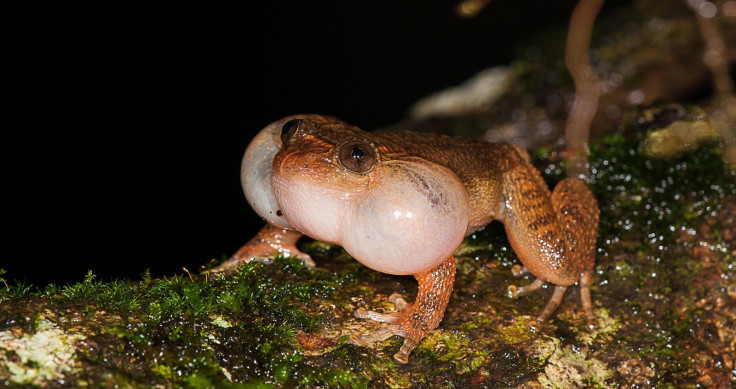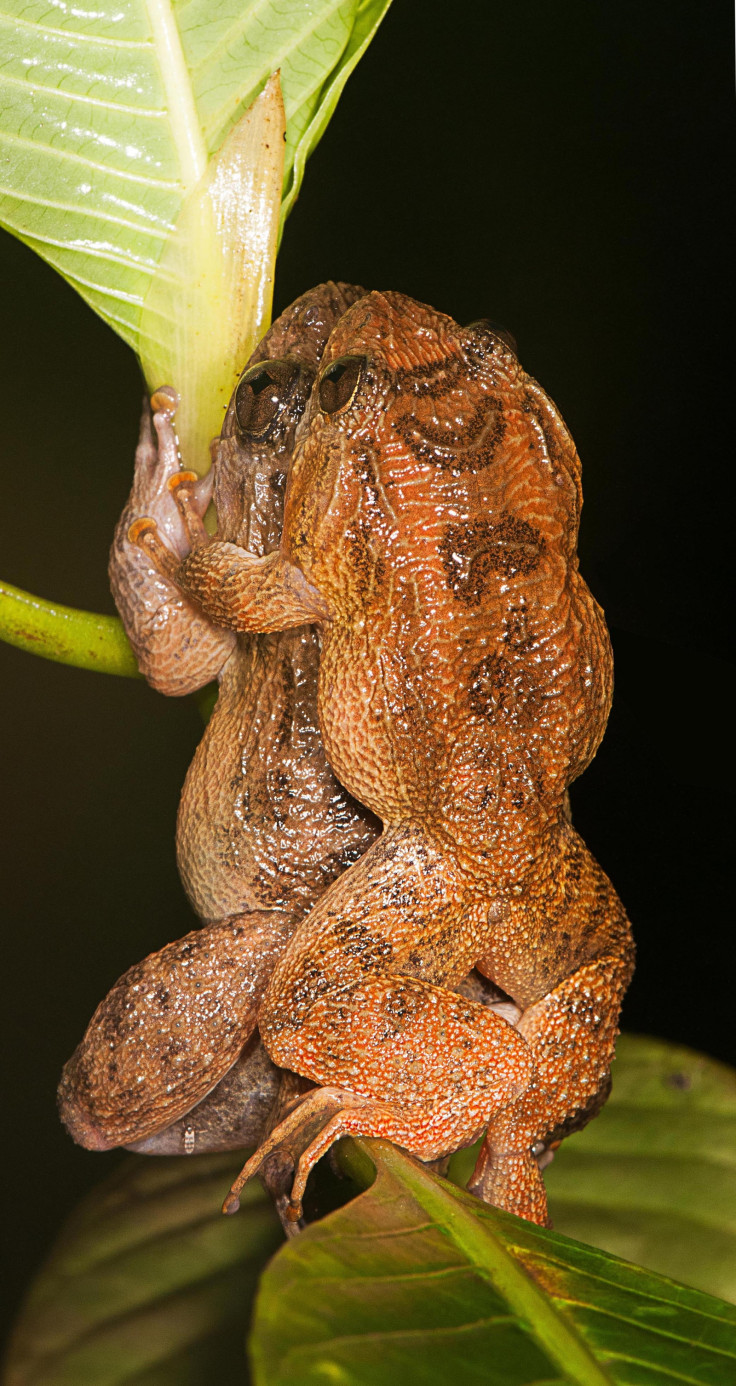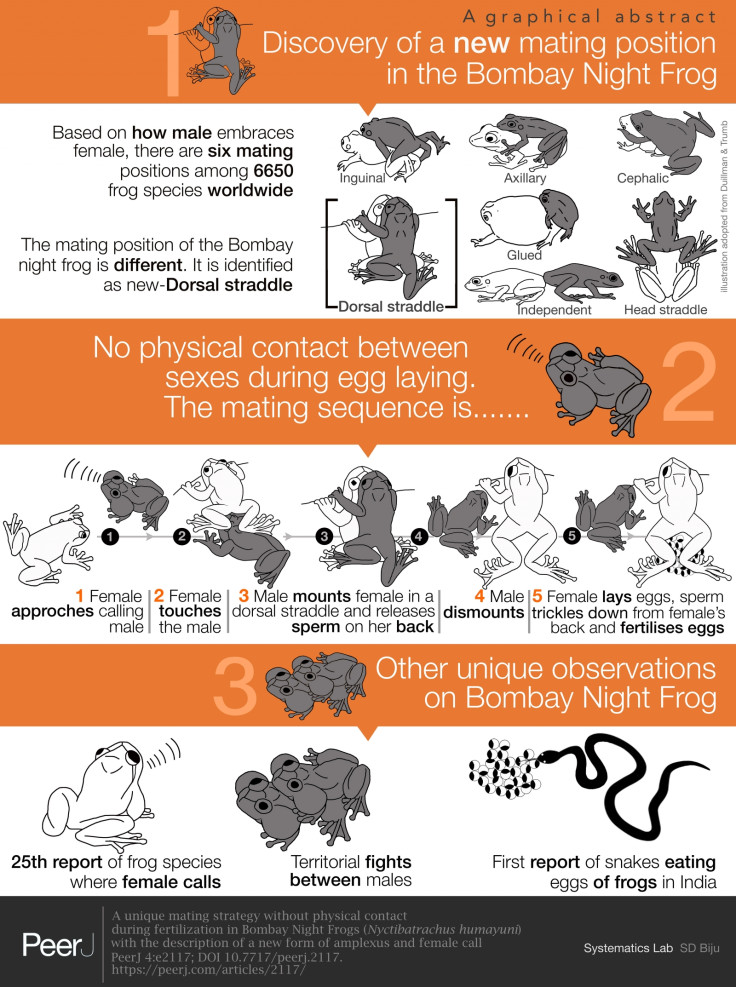Froggy style: Bombay night frog's mating position is unlike anything seen before
Of the 7,000 frog species currently known to science, all have sex in one of six positions. All except one, that is - the Bombay night frog. This species mates without any physical contact during fertilisation via a position dubbed the 'dorsal straddle'.
The discovery of a seventh frog mating position (known as amplexus modes) has been reported by scientists at the University of Delhi. The team says the unique mating technique will shed light on the evolution of frog behaviour and ecology.
Normally, female frogs lay their eggs while being embraced by the male, which simultaneously releases sperm for fertilisation. In the case of the Bombay night frog, the male straddles the female and releases sperm over her back. The female then releases the eggs, which are fertilised as the sperm trickles down her back.

The scientists observed this behaviour over 40 nights of field research between 2010 and 2012 during the monsoon season. The Bombay night frog is endemic to the Western Ghats Biodiversity hotspot of India.
Indian night frogs are an ancient group of Anura that diversified between 70 and 90-million-years-ago. Bombay night frogs tend to live in streams and, during breeding season, vast numbers are found in vegetation and on the ground just after sunset.

As well as having a unique mating position, researchers also found female Bombay night frogs call during the mating season – making it just one of 25 species worldwide to do so.
SD Biju, lead author of the study published in the journal Peer J, said: "This is a remarkable frog with an unprecedented reproductive behaviour, which is unique for a number of reasons. This discovery is fundamental for understanding the evolutionary ecology and behaviour in anuran amphibians."

© Copyright IBTimes 2024. All rights reserved.






